How to Create a Sustainable Garden
Follow these simple tips to plan a garden that supports the environment
If you’re keen to plan a garden that can help to protect the environment, there are a few simple things you can do. From reducing waste and saving water to creating habitats and food for wildlife, even the smallest plot can have an impact.
According to The Office for National Statistics, in 2019, more than 520,000 hectares of Great Britain was taken up by residential gardens, so if we all take care of our own small outdoor area, the combined effort could make a real difference. As part of our Garden Planning guide, here are 7 key things you can do to create a sustainable garden.
Beginning your garden project? Read How to Start a Garden Redesign
According to The Office for National Statistics, in 2019, more than 520,000 hectares of Great Britain was taken up by residential gardens, so if we all take care of our own small outdoor area, the combined effort could make a real difference. As part of our Garden Planning guide, here are 7 key things you can do to create a sustainable garden.
Beginning your garden project? Read How to Start a Garden Redesign
2. Choose hedges rather than fences
When planning the boundaries of your garden, consider swapping a standard garden fence for a hedge. As well as providing food and shelter for birds, animals and insects, a hedge will create a corridor through which small animals, such as hedgehogs, can move freely in and out of your garden.
For the most sustainable option, go for a native hedge, as this will be most helpful for the needs of the wildlife that uses your garden. A hedge that includes a mix of native varieties will produce a succession of different types of fruit and flowers for birds and insects throughout the year.
More: How to Swap Your Fence for a Wildlife-friendly Hedge
When planning the boundaries of your garden, consider swapping a standard garden fence for a hedge. As well as providing food and shelter for birds, animals and insects, a hedge will create a corridor through which small animals, such as hedgehogs, can move freely in and out of your garden.
For the most sustainable option, go for a native hedge, as this will be most helpful for the needs of the wildlife that uses your garden. A hedge that includes a mix of native varieties will produce a succession of different types of fruit and flowers for birds and insects throughout the year.
More: How to Swap Your Fence for a Wildlife-friendly Hedge
3. Incorporate as many permeable surfaces as possible
Hard landscaping in a garden is great for creating seating areas and places to walk, but it’s important to hit the right balance between hard and soft surfaces. When there aren’t enough porous surfaces, it increases the chances of rainwater running off, overwhelming drainage systems and causing local flooding. So plenty of soil and plants in your garden is essential.
However, that doesn’t mean you have to cover the bulk of your plot with a lawn. It’s perfectly possible to have a grass-free garden that’s sustainable, too. The key is to mix plants with your paving, perhaps by slotting ground-cover varieties within the gaps, as seen here. Creeping thyme, for example, will look and smell lovely, as well as provide nectar for bees.
More: Can I Have a Lawn-free Garden That’s Kind to the Environment?
Hard landscaping in a garden is great for creating seating areas and places to walk, but it’s important to hit the right balance between hard and soft surfaces. When there aren’t enough porous surfaces, it increases the chances of rainwater running off, overwhelming drainage systems and causing local flooding. So plenty of soil and plants in your garden is essential.
However, that doesn’t mean you have to cover the bulk of your plot with a lawn. It’s perfectly possible to have a grass-free garden that’s sustainable, too. The key is to mix plants with your paving, perhaps by slotting ground-cover varieties within the gaps, as seen here. Creeping thyme, for example, will look and smell lovely, as well as provide nectar for bees.
More: Can I Have a Lawn-free Garden That’s Kind to the Environment?
4. Make your own compost
Avoid the time, money and effort of lugging heavy plastic bags of compost home from the garden centre by making your own. As well as being less wasteful and kinder to the environment, the rich, fertile soil will give your borders a boost.
Compost bins come in many shapes, sizes and materials, but the key elements you need are air, moisture and heat. Choose the biggest size you can fit into your space, as a larger amount of material will heat up quicker and therefore speed up the decomposition process.
More: Professional Tips for Making Your Own Compost
Avoid the time, money and effort of lugging heavy plastic bags of compost home from the garden centre by making your own. As well as being less wasteful and kinder to the environment, the rich, fertile soil will give your borders a boost.
Compost bins come in many shapes, sizes and materials, but the key elements you need are air, moisture and heat. Choose the biggest size you can fit into your space, as a larger amount of material will heat up quicker and therefore speed up the decomposition process.
More: Professional Tips for Making Your Own Compost
5. Save water
Hotter, drier summers have made it more important than ever to save water, but that can be easier said than done if you want a blooming garden. There are some simple and effective things you can do to reduce water use in the garden, however.
An important purchase, for example, is a water butt, which you can use to collect rainwater for irrigating your borders. Also, choose drought-tolerant plants such as lavender and scabious, take the time to prepare the soil, and add a mulch to slow down the evaporation of water from the surface.
More: How Do I Create a Drought-tolerant Garden?
Hotter, drier summers have made it more important than ever to save water, but that can be easier said than done if you want a blooming garden. There are some simple and effective things you can do to reduce water use in the garden, however.
An important purchase, for example, is a water butt, which you can use to collect rainwater for irrigating your borders. Also, choose drought-tolerant plants such as lavender and scabious, take the time to prepare the soil, and add a mulch to slow down the evaporation of water from the surface.
More: How Do I Create a Drought-tolerant Garden?
6. Avoid plastic where possible
It can be surprising how much plastic we use in the garden. There are those single-use black pots that garden centre plants come in, for example, as well as plastic seed trays, plant labels and twine.
But with a little thought, you can replace these unsustainable extras with more environmentally friendly alternatives. Use wooden labels and traditional garden string, and seek out garden centres that will recycle the black plant pots. Also hunt around for biodegradable seed trays that will break down into the soil when they reach the end of their lifespan.
When you’re planning garden structures such as greenhouses and growhouses, opt for glass instead of plastic if possible. The initial outlay may be higher, but glass will last a lot longer than a cheaper plastic model.
More: How to Reduce Plastic Use in Your Garden
It can be surprising how much plastic we use in the garden. There are those single-use black pots that garden centre plants come in, for example, as well as plastic seed trays, plant labels and twine.
But with a little thought, you can replace these unsustainable extras with more environmentally friendly alternatives. Use wooden labels and traditional garden string, and seek out garden centres that will recycle the black plant pots. Also hunt around for biodegradable seed trays that will break down into the soil when they reach the end of their lifespan.
When you’re planning garden structures such as greenhouses and growhouses, opt for glass instead of plastic if possible. The initial outlay may be higher, but glass will last a lot longer than a cheaper plastic model.
More: How to Reduce Plastic Use in Your Garden
7. Be considerate with lighting
If you want to enjoy long summer evenings outdoors, lighting is essential, but it’s important to consider wildlife, too. Excessive artificial light can have a negative impact on many species, so take the time to find the right balance.
By highlighting only the areas you need to, pointing lights downwards, and using low-level illumination, you can reduce the impact your garden lighting has on nocturnal creatures.
More: How to Design Garden Lighting That’s Good for You and Wildlife
Tell us…
Will you be following any of these sustainable tips? Do you have any other ideas for a planet-friendly plot? Share your thoughts in the Comments.
If you want to enjoy long summer evenings outdoors, lighting is essential, but it’s important to consider wildlife, too. Excessive artificial light can have a negative impact on many species, so take the time to find the right balance.
By highlighting only the areas you need to, pointing lights downwards, and using low-level illumination, you can reduce the impact your garden lighting has on nocturnal creatures.
More: How to Design Garden Lighting That’s Good for You and Wildlife
Tell us…
Will you be following any of these sustainable tips? Do you have any other ideas for a planet-friendly plot? Share your thoughts in the Comments.





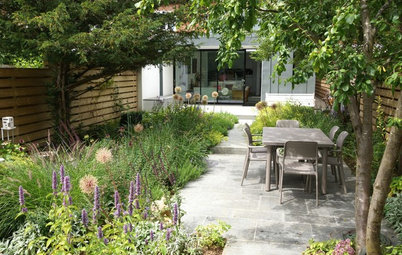
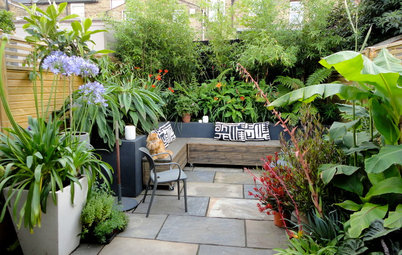
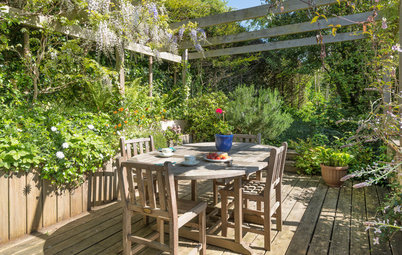
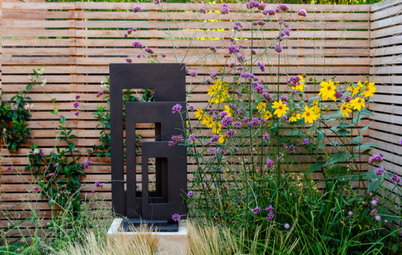
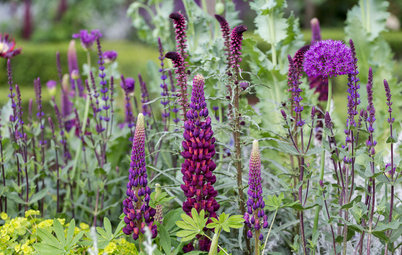
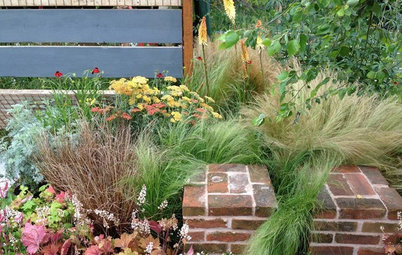
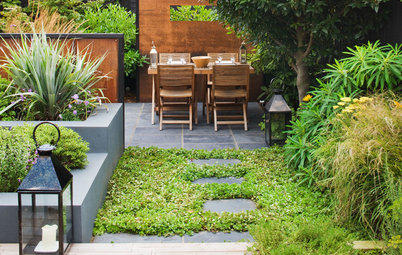
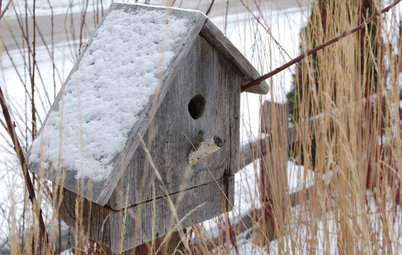
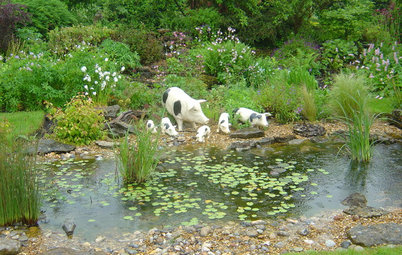
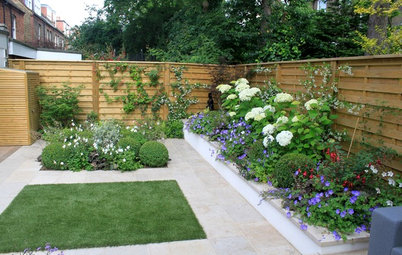
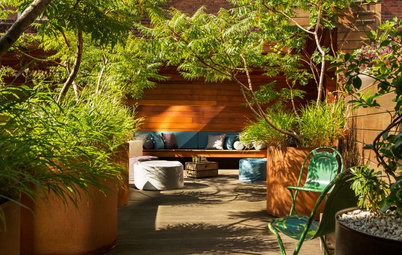
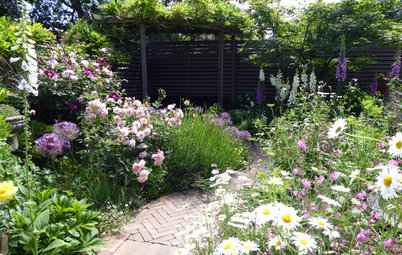
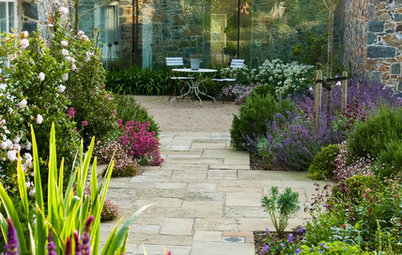
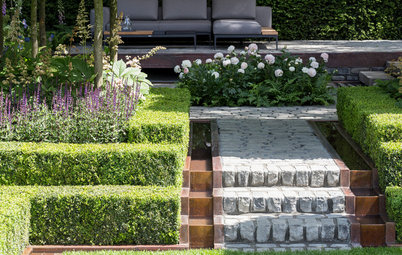

To create a biodiverse outdoor space, try to include as many wildlife-friendly features as possible. A simple idea is to make a bee or insect hotel, like the one pictured here, to provide nesting space for solitary bees and other insects.
A garden pond is one of the best ways to support wildlife, but even a small saucer of water will offer hydration for smaller creatures.
Think also about the types of plants you include and opt for a range of different pollinating varieties, as well as shrubs and trees to provide habitat and berries for birds.
More: How to Create a Wildlife-friendly Garden in Spring
How to Create a Wildlife-friendly Garden in Summer
How to Create a Wildlife-friendly Garden in Autumn
How to Create a Wildlife-friendly Garden in Winter